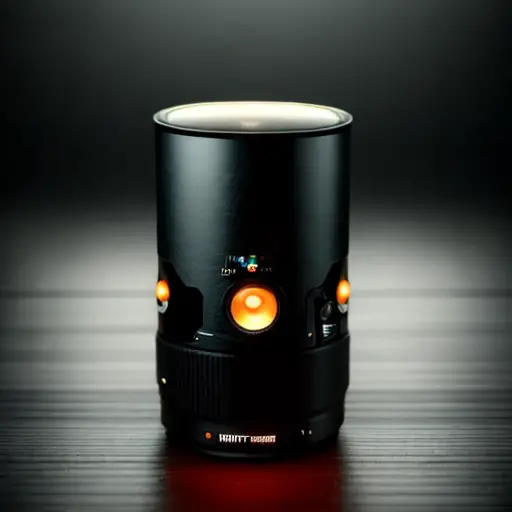Pinhole photography, my friends, is like the quirky cousin of the photography world. Picture this: instead of fancy lenses and high-tech gadgets, you're armed with nothing but a light-proof box and a tiny, minuscule hole. Yes, you heard me right, a hole! But don't let its simplicity fool you, because pinhole photography is a true art form that dates back to ancient times. It's like the OG of photography, capturing images with nothing but the power of light and a touch of magic. So, forget about your fancy DSLRs and embrace the humble pinhole camera, where the tiniest hole can create the biggest wonders.
Pinhole photography is a unique and captivating technique that dates back to ancient times. It involves capturing images without the use of a lens, using only a tiny pin-sized hole in a light-tight box or camera. This simple yet ingenious method allows light to pass through the pinhole, creating an inverted image on the opposite side of the box or camera. The resulting photographs possess a dreamlike and ethereal quality, often characterized by soft focus, infinite depth of field, and a distinctive vignette effect. Despite its simplicity, pinhole photography offers a creative and experimental approach to capturing the world, allowing photographers to explore the beauty of long exposures, unconventional perspectives, and the magic of light.
Let's dive into the fascinating world of pinhole cameras, where science and creativity collide in the most unexpected way. You see, my fellow shutterbugs, pinhole photography is all about the principles of light and optics. When light passes through that tiny, magical hole, it creates a reverse image on the opposite side of the camera. It's like a secret portal that transports the outside world onto a piece of film or photosensitive paper. It's a beautiful dance between light and darkness, where the longer the exposure, the more intricate and dreamlike the image becomes. So, next time you're capturing a pinhole masterpiece, remember that you're not just taking a picture, you're unraveling the mysteries of science, one tiny hole at a time.

Mastering the art of pinhole photography is like embarking on a whimsical journey where creativity knows no bounds. It's about embracing the simplicity of a light-proof box and unleashing your imagination. One of the key techniques in pinhole photography is understanding the concept of exposure time. Unlike traditional photography, where a click of a button freezes a moment in time, pinhole photography requires patience. The longer the exposure, the more light enters through that tiny hole, resulting in ethereal, dreamlike images that seem to transcend reality.
Another technique to master is the art of composition. With pinhole photography, you have the freedom to experiment and think outside the box. Since there are no lenses or zoom capabilities, you must rely on your artistic eye to frame your shot. Play with angles, perspectives, and unconventional subjects to create captivating and thought-provoking images. Remember, the beauty of pinhole photography lies in its ability to capture the world in a unique and unexpected way.
Understanding the characteristics of different pinhole sizes is also crucial in mastering this art form. The size of the pinhole affects the sharpness and depth of field in your images. A smaller pinhole creates a sharper image with a greater depth of field, while a larger pinhole results in a softer, more dreamy effect. Experiment with different sizes to find the perfect balance between sharpness and artistic expression.
Lastly, don't be afraid to embrace happy accidents and imperfections. Pinhole photography is all about embracing the unpredictable and embracing the flaws. Light leaks, vignetting, and distortions are all part of the charm of pinhole photography. Embrace these quirks and let them add character to your images. Remember, perfection is overrated, and sometimes the most beautiful moments are found in the imperfections.
So, my fellow pinhole enthusiasts, go forth and master the art of pinhole photography. Embrace the techniques, let your creativity soar, and capture the world through that tiny, magical hole. Let your images tell stories, evoke emotions, and transport viewers to a world where imagination knows no bounds. Happy pinholing!
Pinhole photography is a unique and fascinating technique that uses a tiny hole instead of a lens to capture images. The pinhole acts as a camera lens, allowing light to pass through and create an inverted image on the film or sensor. This technique dates back to ancient times, with the earliest known pinhole image dating back to the 5th century BCE in China. So, next time you forget your camera lens, just grab a pin and get creative with pinhole photography!
Unleashing your creativity in pinhole photography is like opening a door to a world of endless possibilities. To capture captivating pinhole images, think beyond the ordinary and embrace the extraordinary. Experiment with different materials to create unique pinhole cameras, such as using a coffee can or a shoebox. Play with exposure times to capture movement and blur, adding a touch of dynamism to your images. Don't be afraid to explore unconventional subjects and perspectives, as pinhole photography allows you to see the world through a different lens. Remember, the key to captivating pinhole images lies in letting your imagination run wild and embracing the unexpected. So, go forth and let your creativity shine through that tiny, magical hole.